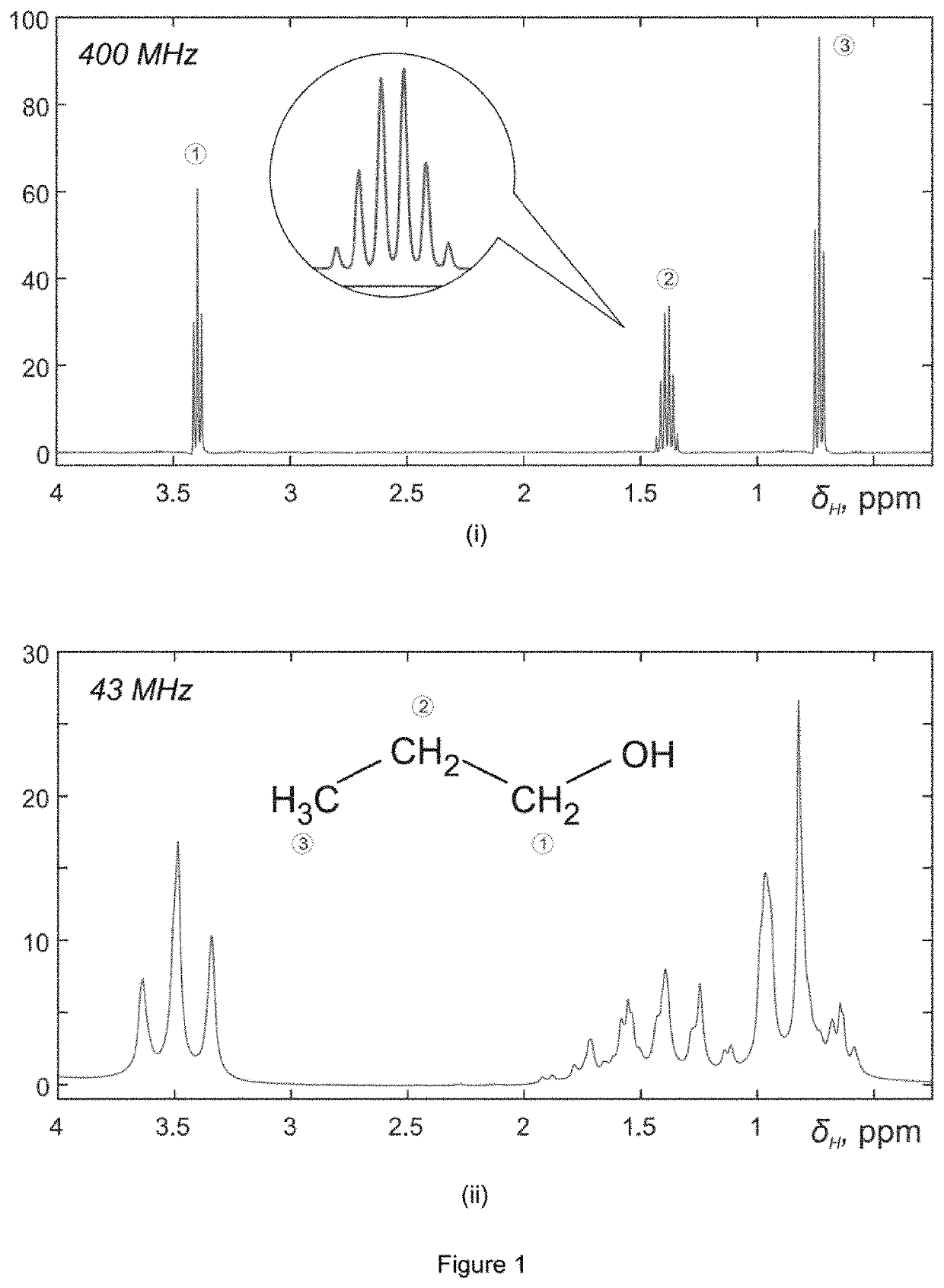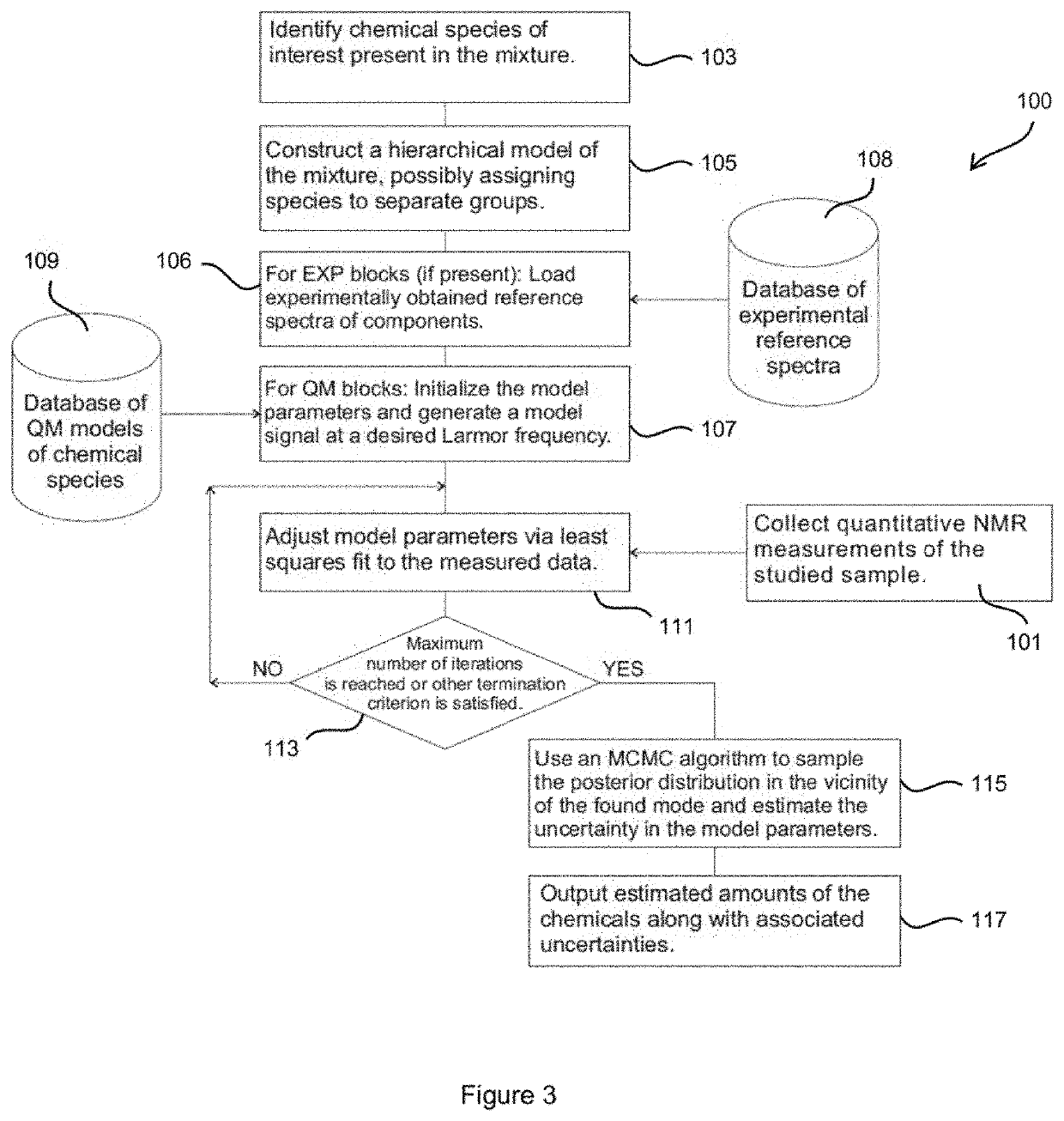Method and system for determining the concentration of chemical species using nmr
a technology of chemical species and concentration method, applied in the direction of magnetic measurement, nuclear magnetic resonance analysis, material testing goods, etc., can solve the problems of high cost, large number of parameters, high cost, etc., and achieve the effect of reducing the overall number of parameters and improving computing tim
- Summary
- Abstract
- Description
- Claims
- Application Information
AI Technical Summary
Benefits of technology
Problems solved by technology
Method used
Image
Examples
Embodiment Construction
[0081]Theory
[0082]An NMR signal for a mixture of K chemical species can be modelled as a parametric model x consisting of a superposition of corresponding signature signals uk, k=1, . . . ,K weighted by the amount of the kth chemical species in the solution, ck:
x=eiϕ0∑k=1Kckuk(θk,τ),(1)
[0083]The sets of model parameters θk determine the appearance of each reference signal;
[0084]they are related to the nature of particular compounds and may include, for example, chemical shifts of the peaks, their relative intensities and widths, as well as values of J-coupling constants. Additionally, the global phase shift φ0 and the ringdown delay τ bear the meaning of the zero- and first-order phasing terms, respectively.
[0085]The weighting coefficients ck, herein intensity estimators, are directly proportional to the amount of the corresponding species k. Therefore, estimating the weighting coefficients is the main goal of model-based quantification.
[0086]The generalised model above may be defin...
PUM
| Property | Measurement | Unit |
|---|---|---|
| operating frequency | aaaaa | aaaaa |
| frequency | aaaaa | aaaaa |
| frequency | aaaaa | aaaaa |
Abstract
Description
Claims
Application Information
 Login to View More
Login to View More - R&D
- Intellectual Property
- Life Sciences
- Materials
- Tech Scout
- Unparalleled Data Quality
- Higher Quality Content
- 60% Fewer Hallucinations
Browse by: Latest US Patents, China's latest patents, Technical Efficacy Thesaurus, Application Domain, Technology Topic, Popular Technical Reports.
© 2025 PatSnap. All rights reserved.Legal|Privacy policy|Modern Slavery Act Transparency Statement|Sitemap|About US| Contact US: help@patsnap.com



